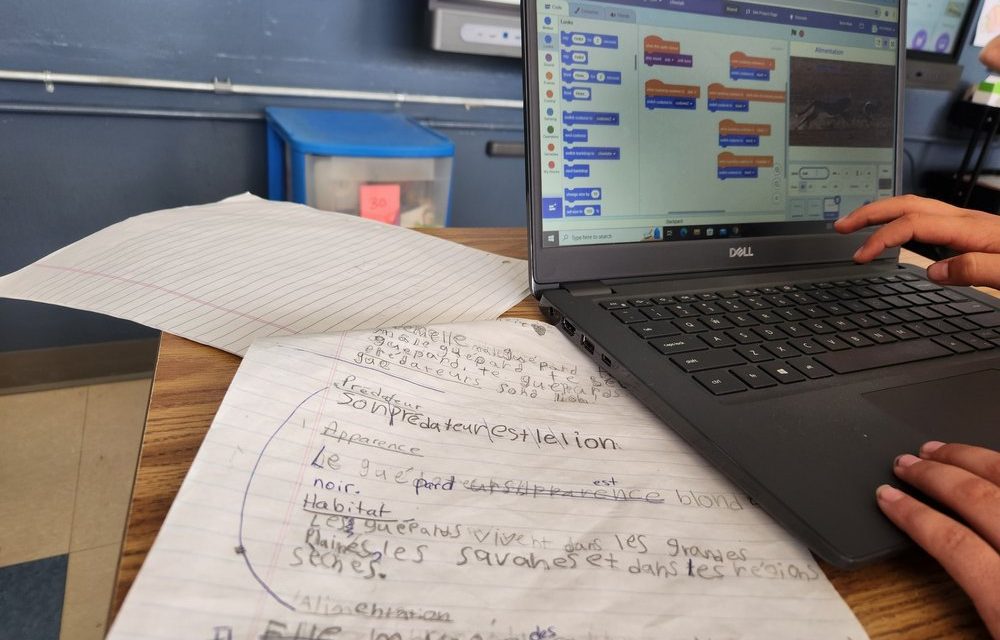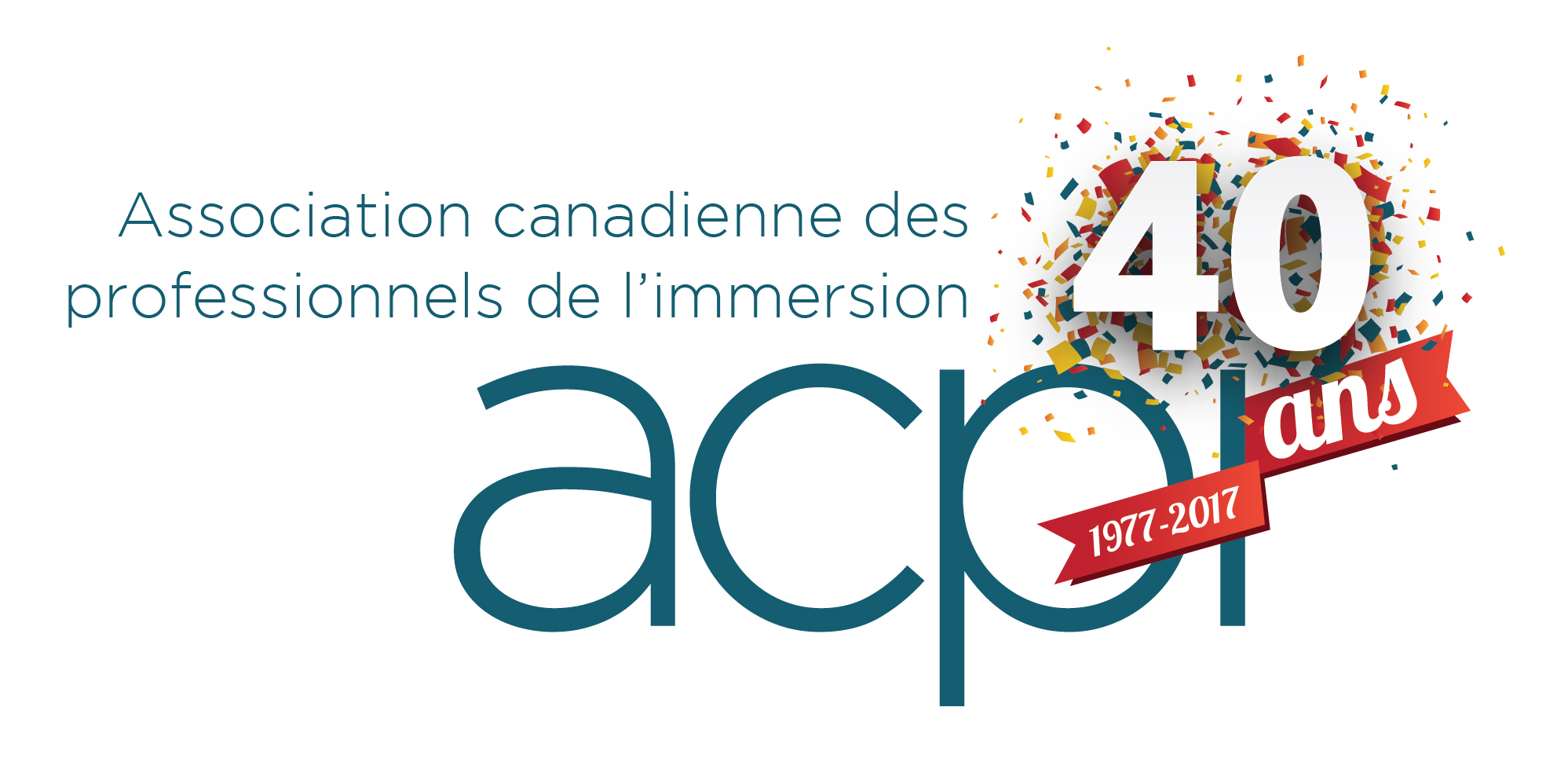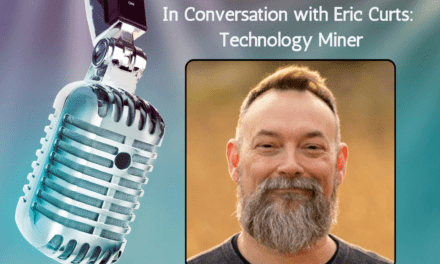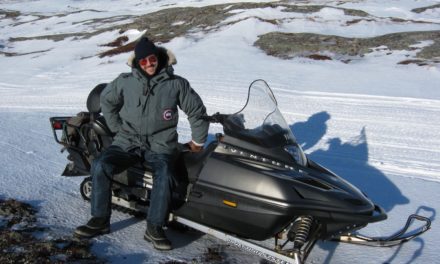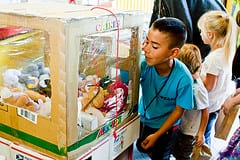This year, I was pleased to collaborate with an elementary cycle 2 teacher to bring an exciting cross-curricular project to her classroom. Ultimately, students worked together to create projects that incorporated science content and research skills, French language skills, cross-curricular competencies, and several digital competencies.
The project kicked off before the winter holidays when I visited the grade 3 and 4 classes to introduce them to Scratch and invite them to explore the block coding application. Scratch is a free, block-based visual programming language developed by the MIT Media Lab. It is designed to teach children and beginners the basics of coding by allowing them to create interactive stories, games, and animations. By snapping together blocks representing different commands, users can build scripts in an intuitive and engaging way. For more insight into Scratch, check out this blog post.

Screen capture of the site Save the Pacific Northwest Tree Octopus
After the winter break, I returned to the classes to dive deeper into our project. The teacher had paired up the students, and each pair selected an animal to focus on. Before the research began, we discussed the importance of critically examining sources and using multiple references to confirm findings. As a class, we explored the website about the Save the Pacific Northwest Tree Octopus to highlight the need for critical thinking. Notice anything fishy?
With a better understanding of how to evaluate sources, students began researching their chosen animals using books and internet resources. They recorded their findings in a graphic organizer, detailing information about the appearance, habitat, diet, behaviors, predators or enemies, family, and life cycle of their animals.
We also asked the students to find appropriate images to include in their project. Students downloaded these images and loaded them as backdrops in Scratch. This provided an excellent moment to discuss issues of copyright and attribution. Using sites such as Unsplash and Pixabay make finding and using images easier and ensures that students are accessing resources that are free to use. Alternatively, I could also see this being a great opportunity to incorporate the arts by having students create their own images, photographing the images and uploading them to Scratch. 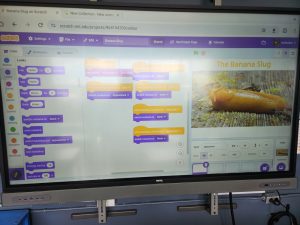
With all the preliminary work completed, it was time to return to Scratch and start coding. Students coded the backdrops to change upon the press of a key. Students programmed the backdrops to change with the press of a key. They created sprites by typing the words of each main topic they had researched. These sprites were then coded to play a recording when clicked. Students recorded themselves narrating the information they had found, which played when the sprite was activated. They had prepared the text in their French classes based on the research conducted in science class. This project offered an opportunity for students to express themselves in their second language in a safe and inclusive way since many students felt more comfortable recording themselves than standing in front of the class as is often done for oral presentations.
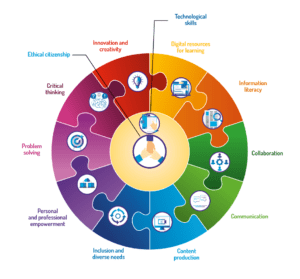
The Digital Competency Framework
This project aligns with the Quebec Digital Competency Framework, which aims to equip students with the skills needed to thrive in a digital world. The framework outlines several key competencies, including the ability to solve problems using digital tools, create digital content, communicate and collaborate using digital platforms, and understand the ethical implications of digital technology. By engaging with Scratch, students developed their coding skills, practiced digital content creation, and practiced their digital citizenship skills. The collaborative nature of the project also enhanced their ability to work together using digital tools, reinforcing multiple aspects of the framework and fostering a well-rounded set of digital competencies.
This project was a fantastic way to integrate multiple disciplines and skills, providing students with a comprehensive learning experience. By combining science, language arts, and digital literacy, we were able to create a dynamic and engaging project that students were excited to participate in.

